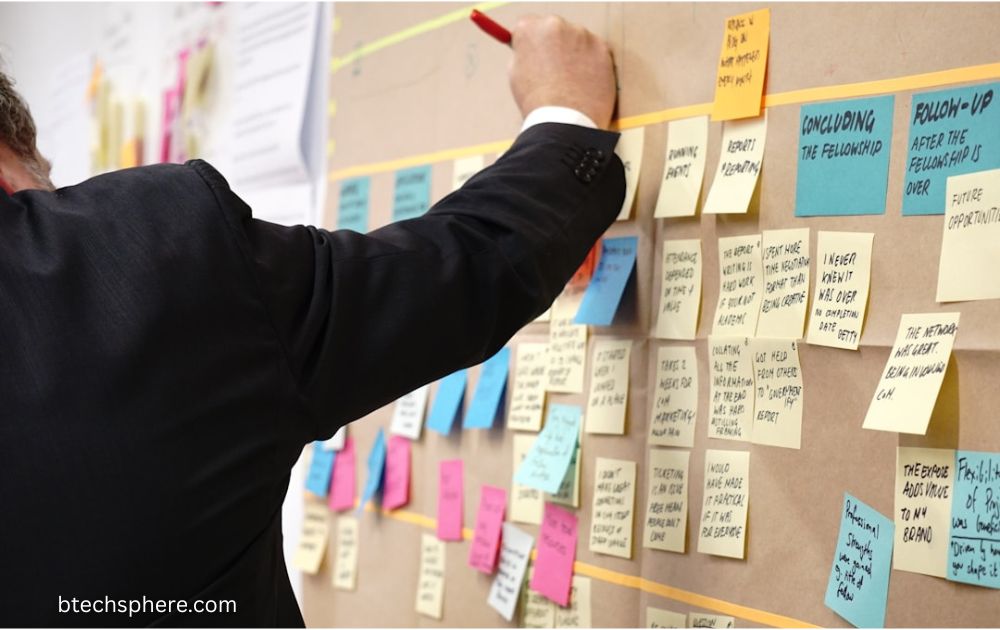In a world where attention spans are shrinking and digital content is everywhere, brands are quietly discovering new ways to connect more meaningfully with their audiences. One of the most subtle yet powerful tools gaining momentum is augmented reality marketing a form of technology-driven storytelling that gently blends the physical and digital worlds. Unlike traditional ads that shout for attention, augmented reality (AR) offers a softer invitation to explore, to interact, and to feel. This shift in marketing is not just about being innovative; it’s about being more human. Let’s take a closer look at the advantages, thoughtful applications, and inspiring examples of how augmented reality marketing is quietly reshaping the way we experience brands.
Understanding Augmented Reality Marketing in Everyday Life
At its core, augmented reality marketing uses technology to place digital content such as images, animations, or product previews onto the real-world view through a mobile screen, smart device, or AR glasses. It adds an invisible layer of experience that can be interacted with in real time. Whether it’s trying on virtual sunglasses from your phone or seeing how a new sofa would look in your living room before you buy, AR makes marketing feel less like a pitch and more like a personalized moment.
The Gentle Advantages of Augmented Reality Marketing
1. Creating Meaningful Engagement
One of the most beautiful benefits of augmented reality marketing is the way it softly draws people in. Instead of simply watching or scrolling past an ad, users are invited to engage, explore, and even play. This gentle interaction creates a stronger memory and builds a more emotional connection between the brand and the customer.
2. Encouraging Confident Decisions
AR experiences provide clarity without pressure. When users can visualize how a product will look or function in their own space, they feel more confident in their decision. This often leads to higher satisfaction, fewer returns, and more trust in the brand.
3. Standing Out, Without Shouting
In crowded markets, AR helps brands stand out not by being louder, but by offering something thoughtful and new. An interactive AR experience can make a brand feel fresh, modern, and genuinely helpful without overwhelming the audience.
4. Enhancing Personalization
AR allows for tailored experiences. Whether it’s trying on personalized makeup shades or interacting with a product that adapts to your preferences, this level of customization feels soft and considerate not pushy or impersonal.
5. Supporting Sustainability
With virtual try-ons and previews, there’s less need for physical samples or excessive packaging. This not only benefits the environment but also shows the brand’s quiet commitment to responsible marketing.
Where AR Marketing is making a Gentle Mark: Real-Life Applications
In Fashion and Beauty
Brands in the fashion and beauty industries are using AR to let customers try on clothing, accessories, and makeup from the comfort of their homes. This eliminates guesswork and helps people feel more confident before they make a purchase. For example, a beauty brand may offer an AR mirror feature in its app that lets users see how different lip colors would look on their face in real time. The experience feels intuitive and personal and creates a lasting impression.
In Home Décor and Furniture
Furniture companies are gently reshaping the buying journey by allowing people to place virtual furniture in their real living spaces. Through AR, users can see if a chair fits their room size or if the color matches their walls all without leaving the house. This small convenience often leads to stronger loyalty and reduced returns, making it a win-win for both brands and customers.
In Retail and E-Commerce
Retailers are integrating augmented reality marketing into their websites and apps, offering product previews, tutorials, and interactive displays. Shoppers are no longer just browsing they’re experiencing the product in a more engaging and memorable way. Even in-store, AR kiosks and displays provide enhanced product information or virtual assistants that gently guide customers through their shopping journey.
In Entertainment and Events
AR marketing is also showing up in live events and promotions. From treasure hunts powered by AR to immersive event experiences, it adds a layer of excitement that’s both playful and respectful of the user’s time. Concerts, festivals, and even pop-up stores now use AR to create shareable, joyful moments that deepen brand engagement in subtle ways.
In Education and Awareness Campaigns
Not all marketing is about selling sometimes, it’s about teaching or inspiring. AR is being used by nonprofits and socially conscious brands to create emotional storytelling experiences. These gentle messages often leave a more profound impact than traditional ads.
Real-World Examples That Reflect the Best of AR Marketing
IKEA’s Place App
IKEA gently revolutionized furniture shopping with its “Place” app, which allows users to virtually position true-to-scale furniture in their homes. This simple, intuitive tool removes uncertainty and brings delight to the home design process.
L’Oreal’s Virtual Makeup Try-On
L’Oreal’s AR-powered app lets users try on different makeup looks with just their phone camera. It’s fun, flattering, and feels like a beauty consultant in your pocket all while driving meaningful engagement.
Pepsi’s AR Bus Shelter Campaign
In a lighthearted public campaign, Pepsi transformed a London bus stop into an AR screen that showed aliens, robots, and flying saucers blending into the street view. It was surprising, funny, and unforgettable showing how AR can also spark joy.
Sephora’s Virtual Artist
Sephora’s AR tools allow customers to test lipsticks, blushes, and eye shadows on their own face before buying. This thoughtful tool enhances the customer experience and builds trust without requiring a single sample or tester.
A Quiet Revolution in Marketing
The evolution of augmented reality marketing isn’t about flashy gimmicks it’s about creating experiences that feel closer, more personal, and more thoughtful. It gives brands a gentle way to be present in people’s lives, offering value instead of intrusion.AR allows us to experience products and stories in ways that feel real and in doing so, it makes the brand itself feel more human.
Conclusion
In an age where people crave authenticity and connection more than ever, augmented reality marketing offers a path forward that is both innovative and kind. It doesn’t demand attention it earns it through thoughtful interaction, emotional relevance, and genuine utility. As brands continue to explore what it means to truly connect with their audiences, those who embrace AR with care, creativity, and integrity will gently lead the way into a future where marketing feels less like noise and more like a conversation worth having.











